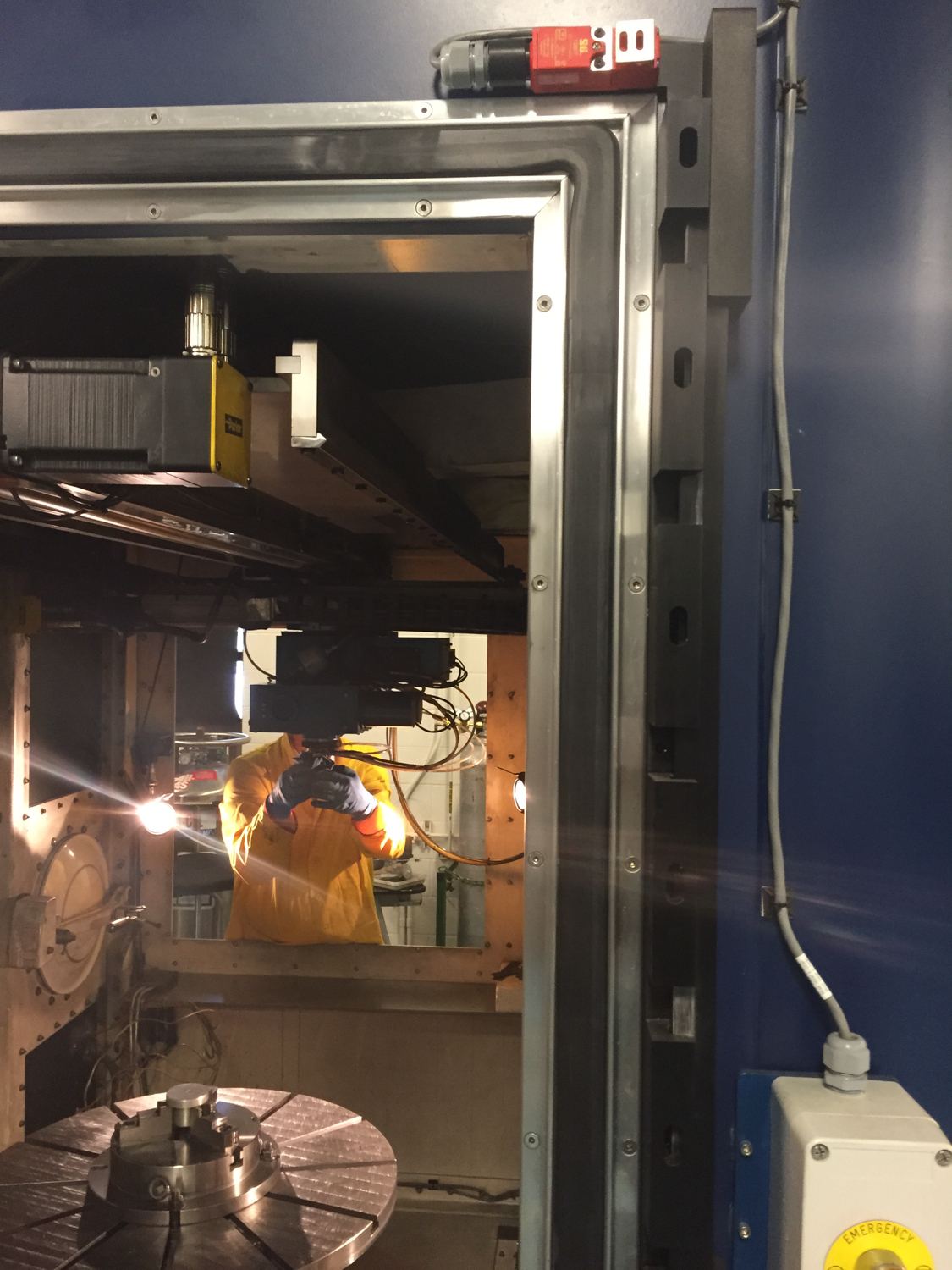A few months back I had the pleasure of visiting the Connecticut Center for Advanced Technology, which is located on the UTC/Pratt & Whitney East Hartford campus. CCAT began as a facility focused on researching laser drilling, but has moved deeper into 3D printing, and specifically directed energy deposition, in the past few years.
In addition to a full subtractive (manual and CNC) shop, CCAT has a few cool additive tools that I was particularly interested in. The first is an Optomec 850R LENS system. The 850R is a large format directed energy deposition machine which can be used for both new parts and repairs. It's also useful for material development, as DED machines can create parts with a small amount of powder (while powder bed fusion machines generally require a large amount of powder).
(Click on the photos for larger versions + descriptions)
The other thing I was excited to see was their Kuka HA30 robot, which has a coaxial laser cladding head attached to it. This robot can be used for either etching/engraving or cladding, meaning that it can either subtract or add material to a part. Especially when combined with the two-axis rotary table shown below, this thing can create some really complex parts.
It was really cool seeing these specialized technologies being used in real life. Thanks to CCAT for having me!







